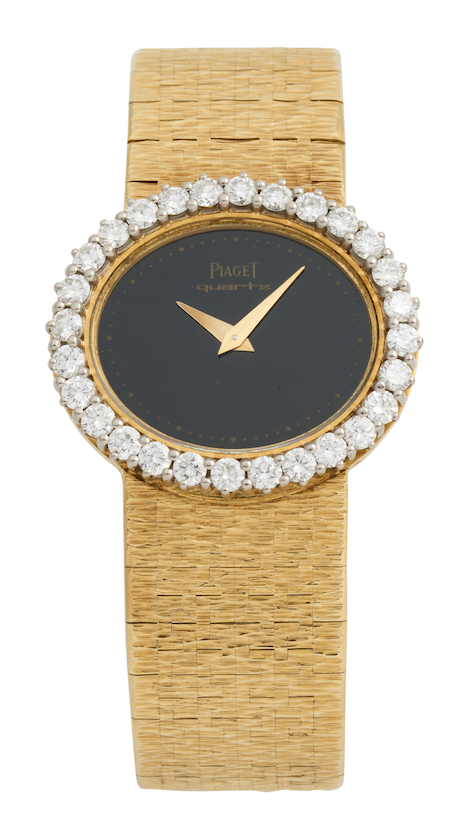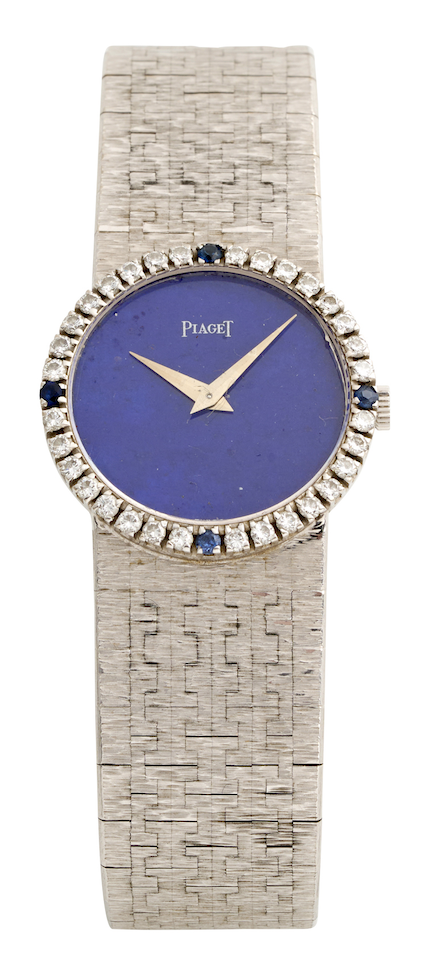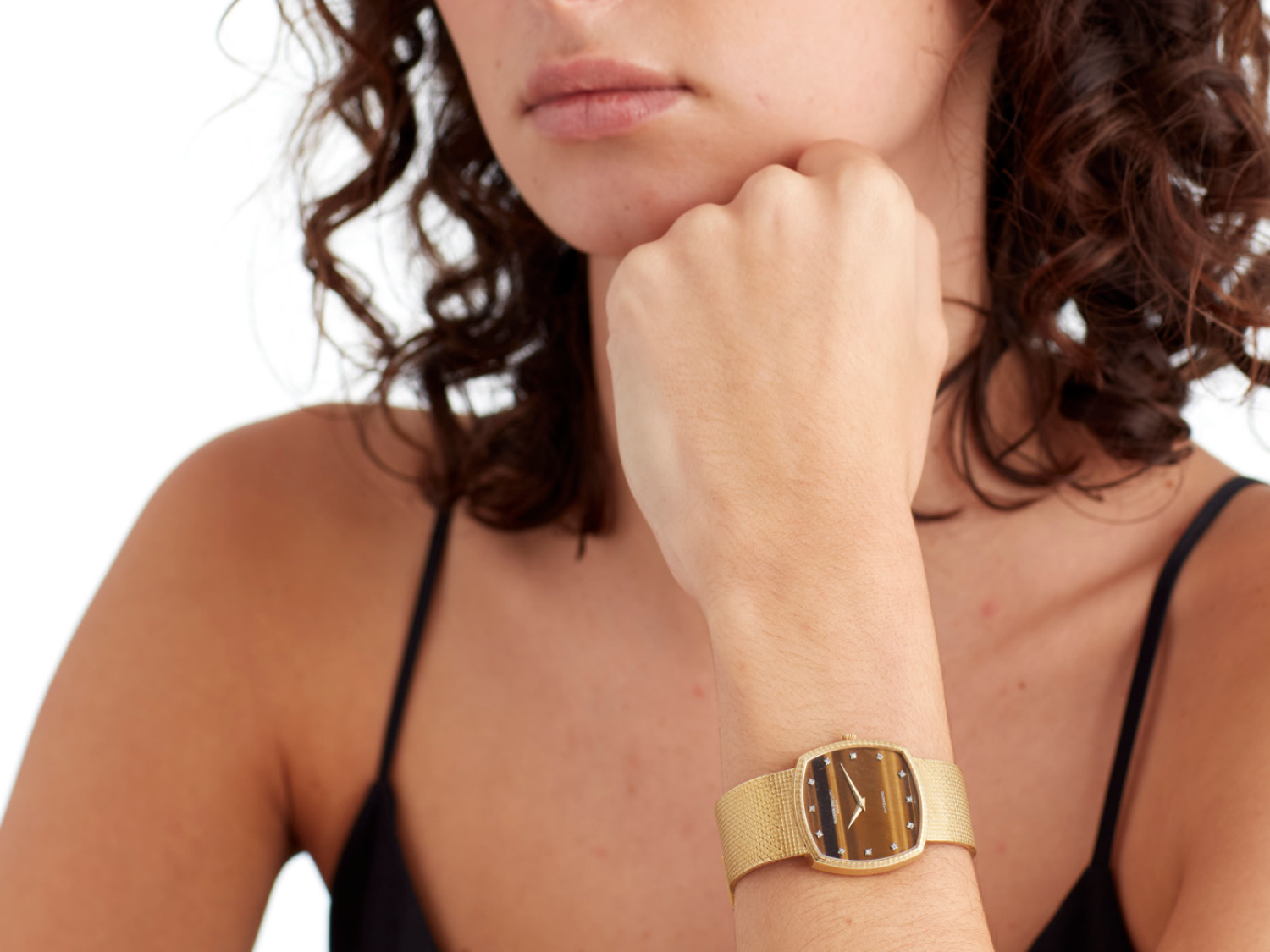There’s little doubt an unusually configured watch dial has caught your eye at some point – whether through an asymmetric layout, idiosyncratic hour markers, the absence of fancy hands, skeletonization, or enamel detailing. Yet outshining all these phenomenal features is the moment where the watchmaker’s craft meets nature: the gemstone dial. And while timepieces that use slithers of gemstones for dials such as tiger’s eye, lapis, onyx, malachite and so on have been on the market since the 1960s, the return to prominence in the past five or so years has been largely due to the surge of interest in vintage Piaget gemstone timepieces, which have led the charge.

The hard stone cut dial may well have remained a horological fantasy had it not been for Piaget’s daring and rebellious spirit (it was after all, the Sixties). Often, the most groundbreaking innovations have their roots in technology combined with vision and this was certainly the case at Piaget. For a maker that started from relatively modest origins in 1874 as a producer of high-precision watch components, their development of a near paper thin calibre enabled the arrival of some of the most audacious and striking dial designs the industry had ever seen.
The dazzling gemstone dial is largely synonymous with the maker because in 1957 Piaget developed the secret ingredient that made them possible. As a pioneer in the creation of ultra-thin movements, their manual 9P and automatic 12P movements were respectively the thinnest in their category in the world in 1957 and 1960. It was this technological breakthrough that underpinned and paved the way for the gemstone as the centrepiece and not merely as accent.
What we see with women’s watches through to the 1960s is that they were predominantly small and elegant with inherently miniscule dials. The designs were largely dictated by the fashions of the times, they eschewed complications, there was no need for them to perform as tool watches, and they were ‘time only’ timepieces. Jaeger-LeCoultre prided itself in producing small women’s watches, their breakthrough moment came in 1929 when they lay claim to producing the smallest watch in the world with the development of their microscopic Duoplan calibre 101. But with the calibre 9P, Piaget would create the thinnest movement in the world. The 9P calibre was not only slim, providing for more creative liberty, it was also wider in diameter which meant that in turn the dial, hitherto an unutilised decorative space, was redefined from being an entirely utilitarian feature to a decorative one as well.

The process of employing gemstones as dials was fraught, and in its experimental stages it came at a cost. To make a dial out of hardstone, the lapidarist needs to not only cut and polish an incredibly thin and precise layer but a section of stone of that captures the pattern they want the dial to display – a dexterous combination of artistry and technique. Numerous dials ended up in pieces on the workbench during the machining process or at the stage of the hands setting. Even today, many an experienced horologist will steer clear of servicing a watch with a gemstone dial such is the daring delicateness of the 1mm hardstone slither. Yet, for all the wastage, cost and heartache a select few forged on with persistence and for Piaget, it paid off and catapulted their 60s and 70s watches to an elite collectors’ class.
The decision to retain the gemstone dial was all the more adventurous as the use of elegant materials during the 1980s gradually diminished. During the Quartz Crisis there was a surge in the stainless-steel sports bracelet watch and a shift to affordable quartz watches – think Swatch. There was many a casualty with prominent brands falling by the wayside, being bought out, or merged. The stone dial was becoming a costly old hat, yet some brands persisted and managed to fashionably cross over. Cartier being a notable brand that flourished through their Must de Cartier line, with several of their quartz powered watches displaying stone dials. Rolex, another, with their Cellini range and Audemars Piguet too made a name for themselves in their distinctive use of exotic dials.
For an industry that is characterized by constant evolution, watchmakers today continue to display their mastery of precision and persistence to embrace lesser-known hardstones with notable manufacturers even branching into minerals such as meteorite. But looking back to where it all started, gemstone dials for me are imbued with a vintage glamour, to an elegant era when watches entered the realm of precious objets d’art, and in our digital world of today, I feel they have become all the more precious, just like time itself.
By Patricia Kontos, Senior Timepieces & Jewels Specialist
Top Image: Vacheron Constantin Ref 7391 an 18ct gold, diamond-set bracelet watch with tiger’s eye dial, circa 1975 Sold for $6,875
October 2025
